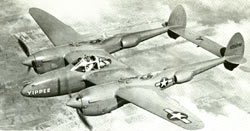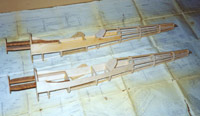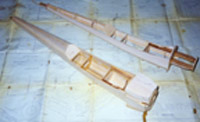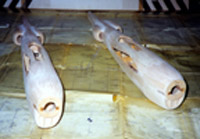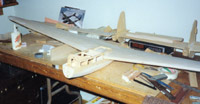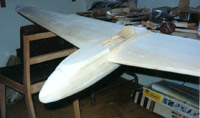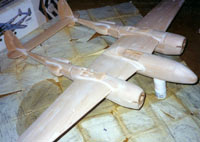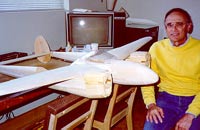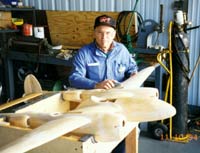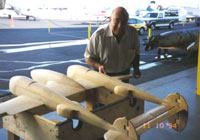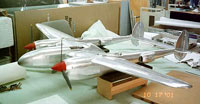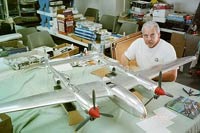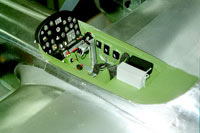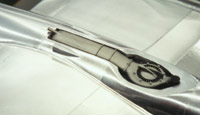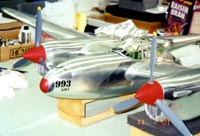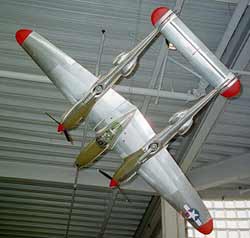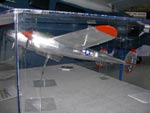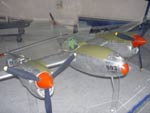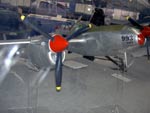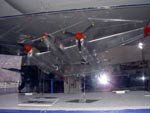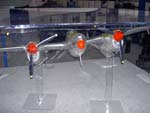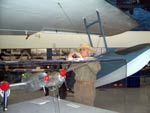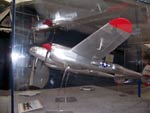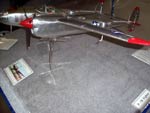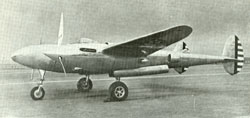
|
The P-38 Lightning was the
brain child of the Lockheedís famous Kelley Johnson, of the Skunk works,
as a result of a request for proposal of the Army Air Corps in 1937. The
requirement was for a high altitude interceptor capable of doing 360 mph
at 20,000 ft and 290 mph at sea level. The aircraft had to reach optimum
altitude in six minutes and have and endurance of one hour at full throttle.
The first XP-38 flew in January 1939. From this first flight it went through numerous changes, which included structural, armaments and more powerful engines. The P-38F was the first model that was used in numbers in Europe towards the middle of 1942. A total of 9,923 aircraft were built of various models ending with P-38M, from 1940 through 1945. It saw action on all fronts, but its greatest fame came in the Pacific where is was credited with shooting down more Japanese aircraft then any other American aircraft. In April 1943 it was credited with shooting down the plane that was carrying Admiral Yamamoto, the one who planned the Pearl Harbor attack.
When the P-38 first entered service it was not fighter ready. Because of the war, the time between fighter development phases were either eliminated or shortened. Initially it was plagued with problems and it
|
|
wasnít until 1943 with the H model that all the bugs were worked out. A major problem surfaced, during late spring 1941, with the loss of control in a dive caused by aerodynamic compressibility. At an indicated airspeed of about 320 mph, the airplane's tail began to shake violently and the nose dropped until the dive was almost vertical. The tail buffet problem was soon resolved after Lockheed installed new fillets to improve airflow where the cockpit gondola joined the wing center section. Lockheed never fixed the nose drop problem, but did install dive recovery flaps under each wing, in 1944, to restore lift and smooth the airflow enough to maintain control when diving at high-speed. Early deliveries to the English and the French were ordered without superchargers. The high altitude performance of these planes were so bad that they were returned, in 1941, and used as trainers for the U S Army Air Force.
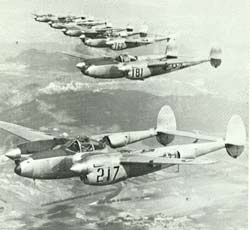 |
|
P-38J
|
The Eight Air Force used the long range capabilities of the P-38 as bomber escorts over Germany. Engine and cooler failures forced many of the escort aircraft to dropout. The loss of an engine resulted in many single engine crashes impacting pilot morale. Not withstanding all the problems, the P-38 was a lethal weapon when flown by a competent pilot.
The P-38J was the fastest Lightning with a top speed of 420 mph, and the largest version produced was the L configuration with 3848 aircraft. The P-38 underwent many modifications. The P-38J intakes under the engines were enlarged to house core-type inter coolers. The curved windscreen was replaced by a flat panel, and the boom mounted radiators were enlarged just to name a few.
The P-38 was the largest, heaviest, and fastest fighter at the time. With its internal fuel capacity of 410 gallons and 1,010 gallons in two external drop tanks, the Lightning was the first fighter that had a range capable of providing long-range bomber escort.
By 1944 the P-38 was being phased out in Europe and replaced by the P-51 Mustang and the P-47 Thunderbolt, although they were still being used until the end of the war in 1945. The Germans called the P-38 the Gabelschwanzteufel, the two tailed devil.
In the Pacific the P-38 replaced the aging P-39ís and P-40ís which were no match for the Japanese Zero. The P-38 was well suited for the Pacific air battle because of its long range capabilities. The long distances involved meant that the Lightning bore the brunt of the Air Corps air action. The two engines saved many a pilot when air combat or mechanical failure damaged an engine. With a single engine, the pilot would have been lost.
Richard Bong in a P-38, named after his sweetheart and future wife Marge, became the highest scoring ace in America. He shot down 40 Japanese aircraft. Bong entered the Pacific theater in 1942 and achieved his 40th kill in December of 1944. Captain Richard Bong received the Distinguished Service Cross for extraordinary heroism in action over Markham Valley, New Guinea on July 26, 1943.
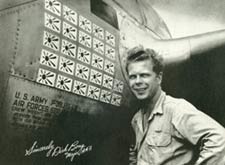 |
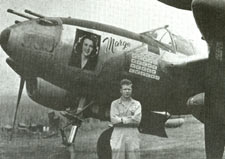 |
|||||||||||||||||||||||||||||||||||||||||||||||||||||||||||||||||||||||||||||||
|
Richard
Bong
|
Bong
& P-38 Marge
|
|||||||||||||||||||||||||||||||||||||||||||||||||||||||||||||||||||||||||||||||
|
P-38 Model Construction
|
||||||||||||||||||||||||||||||||||||||||||||||||||||||||||||||||||||||||||||||||
|
The task of building a Museum quality model of the Lockheed P-38 was started in 1993 using, as the basic structure, a kit manufactured by Royal Products Corporation of Japan. The scale of the model was 1 3/8 inches to the foot resulting in a wing span of 74 ľ inches. The basic construction was plywood and hardwood frames with balsa wood planking and sheeting. To accommodate the model engines and the radio control the model designers deviated from the original design. The first of these was to correct a 2 degrees right angle engine thrust to compensate for the same rotation of the two engines and the elimination of the holes in the top of the engine compartment for the engine cylinders. Where cooler and air intakes were blocked off, these had to be constructed to look like the original. Access and transportation considerations were also eliminated in the redesign.
|
||||||||||||||||||||||||||||||||||||||||||||||||||||||||||||||||||||||||||||||||
|
||||||||||||||||||||||||||||||||||||||||||||||||||||||||||||||||||||||||||||||||
